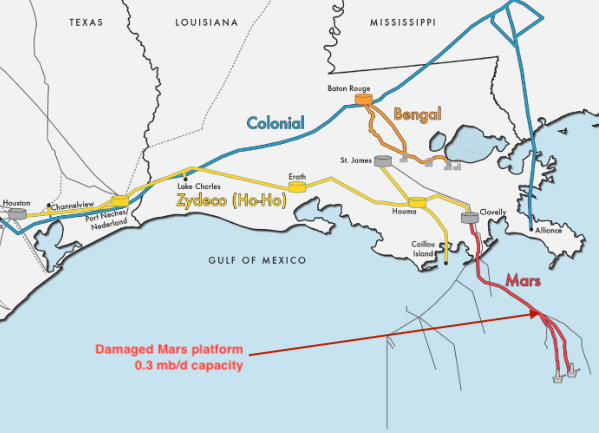Join EnergyScan
Get more analysis and data with our Premium subscription
Ask for a free trial here
The BSEE reported that as of yesterday that the total outages in the Gulf of Mexico remained at 1.7 mb/d, which was revised higher from the day before when the bureau estimated outages at only 1.4 mb/d. This shows that impacts on production are still not fully understood. In the wake of this news and a weaker dollar, crude futures rose by close to 2% intraday, to reach 73.2 $/b for Brent’s November contract. Time spreads continued to hold above 60 cents for the Nov/Dec spread, reflecting the supply side tightness of the US crude market. Looking at other infrastructure of the US coast, the LOOP terminal remained shut, which handles exports and imports of US crude oil, while Port Fourchon appears to be operational, which could lead to a faster recovery of the offshore production. Still, longer-term impacts of the hurricane are emerging. One of Shell’s platforms, extracting 0.3 mb/d of Mars-type grade (medium sour), has been damaged by Ida and is anticipated to take at least weeks before fully ramping back up. This puts particular pressure on US exports, as Mars remains in demand for Chinese, Korean and Japanese refiners.

source: Shell, Engie
Refined product stocks in Singapore, Fujairah and Rotterdam continued to drift lower, with a drop of 1.4 mb, with fuel oil stocks drawing rapidly in the East, while gasoline and naphtha stocks continued to be depleted in Europe, as we passed the peak driving season. Gasoil stocks in Europe did not recover from last week’s measurement and are still below 15 mb, while exports of Russian diesel will be low for the months to come, due to high domestic demand in Russia.
Get more analysis and data with our Premium subscription
Ask for a free trial here